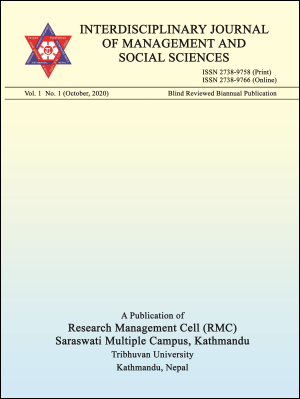Qualities of Household Resilience after 2015 Earthquake: A Study of Dhugin Lamatar
DOI:
https://doi.org/10.3126/ijmss.v1i1.34532Keywords:
Disaster, Resilience, Nepal Earthquake 2015Abstract
Disasters usually, create unexpected large scale destruction and disruption within short periods of time. Be it an earthquake, floods, or landslides, all explicitly disrupts the general trajectory of people’s lives. After a disaster, people need resilience to recover from the situation. Nepal confronted horrendous seismic tremors on 25 April and 12 May 2015. In such a context, this paper tries to explore what type of household able to stand again and the major objective of this research is to find out the qualities of household resilience in terms of disaster. Furthermore, this article tries to yield the answer to the research question is, How households able to stand again after the 2015 earthquake? Nepal earthquake 2015 destroyed the houses, took the lives of people in Dhugin chowk. Dhugin chowk, Lamatar is carefully chosen for this research because it is the most impacted area among many in the Nepal earthquake 2015.
Random sampling and interview methods are exercised to take the depth information from the field and this research has been conducted using the qualitative method. My finding is: shocks adopting and absorbing the capacity of household help to create disaster resilience which is determined by capital, fixed assets, education, and regular income in the research area.

